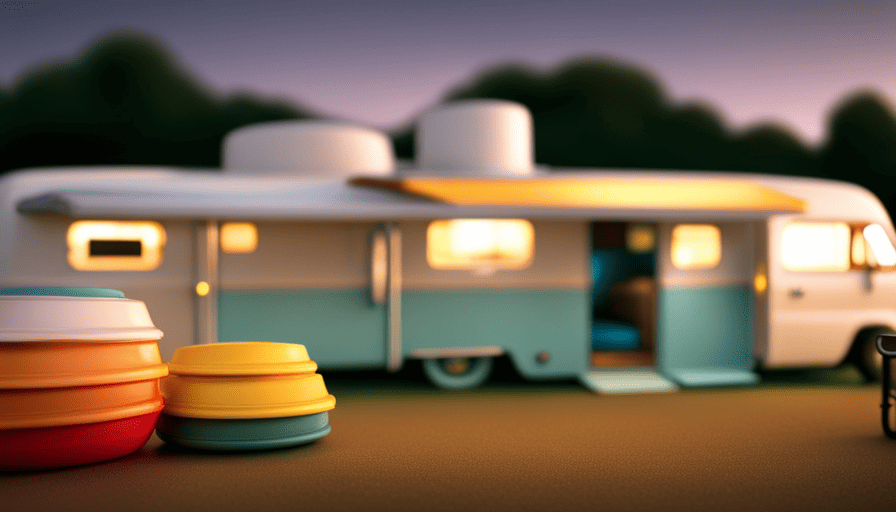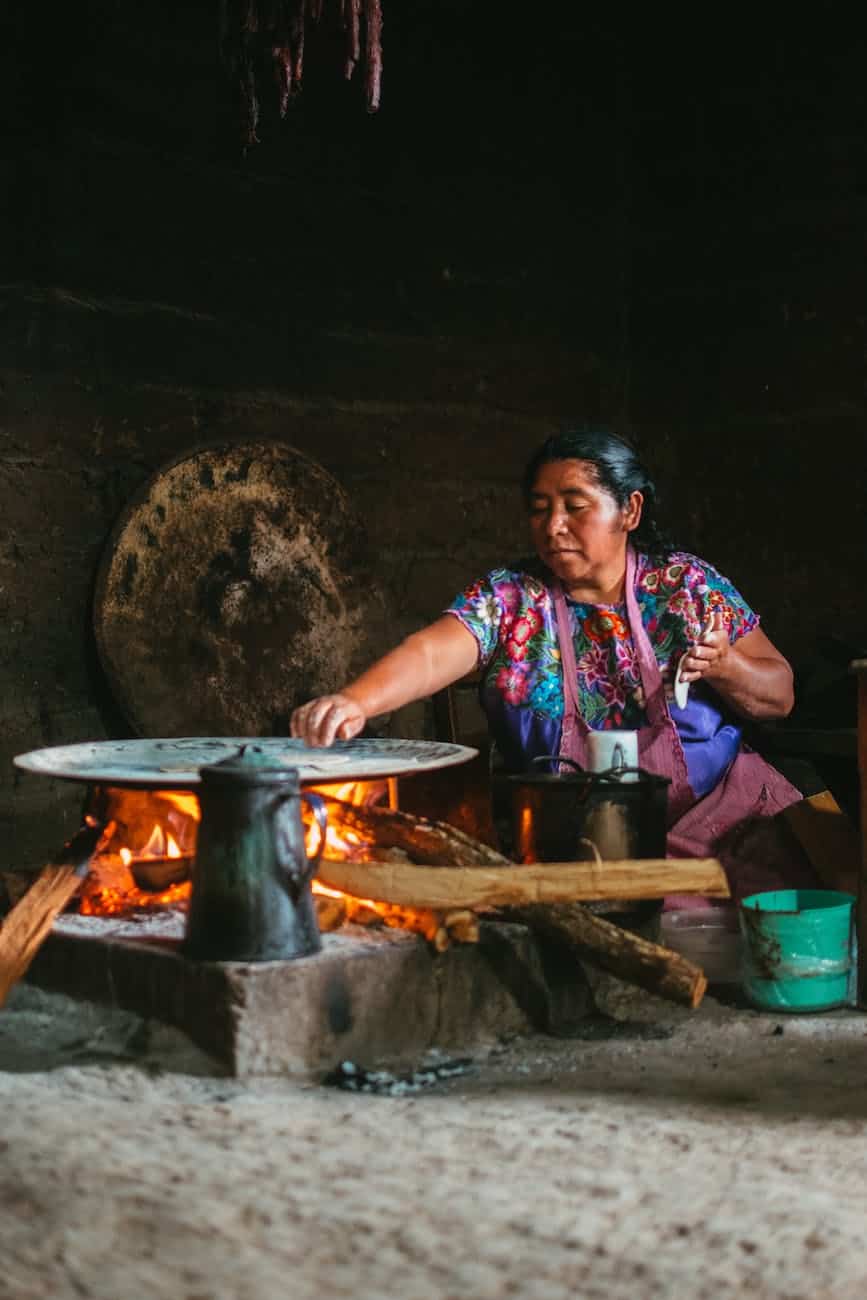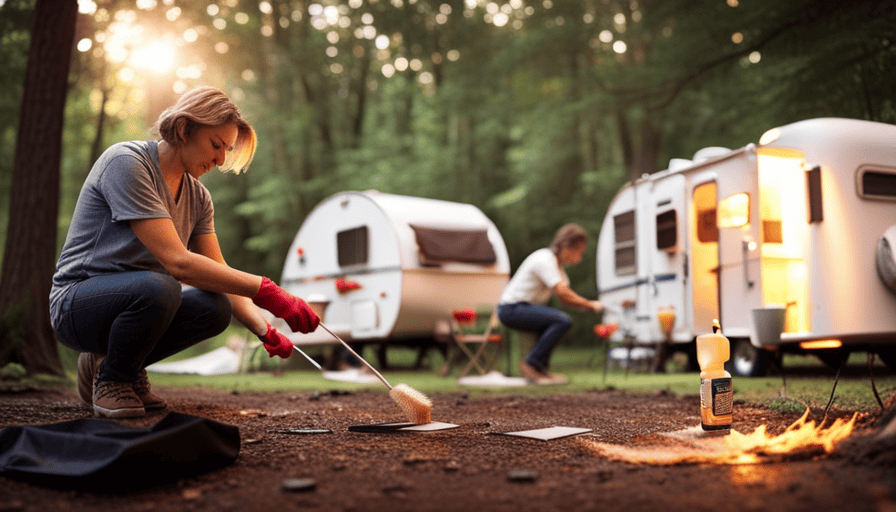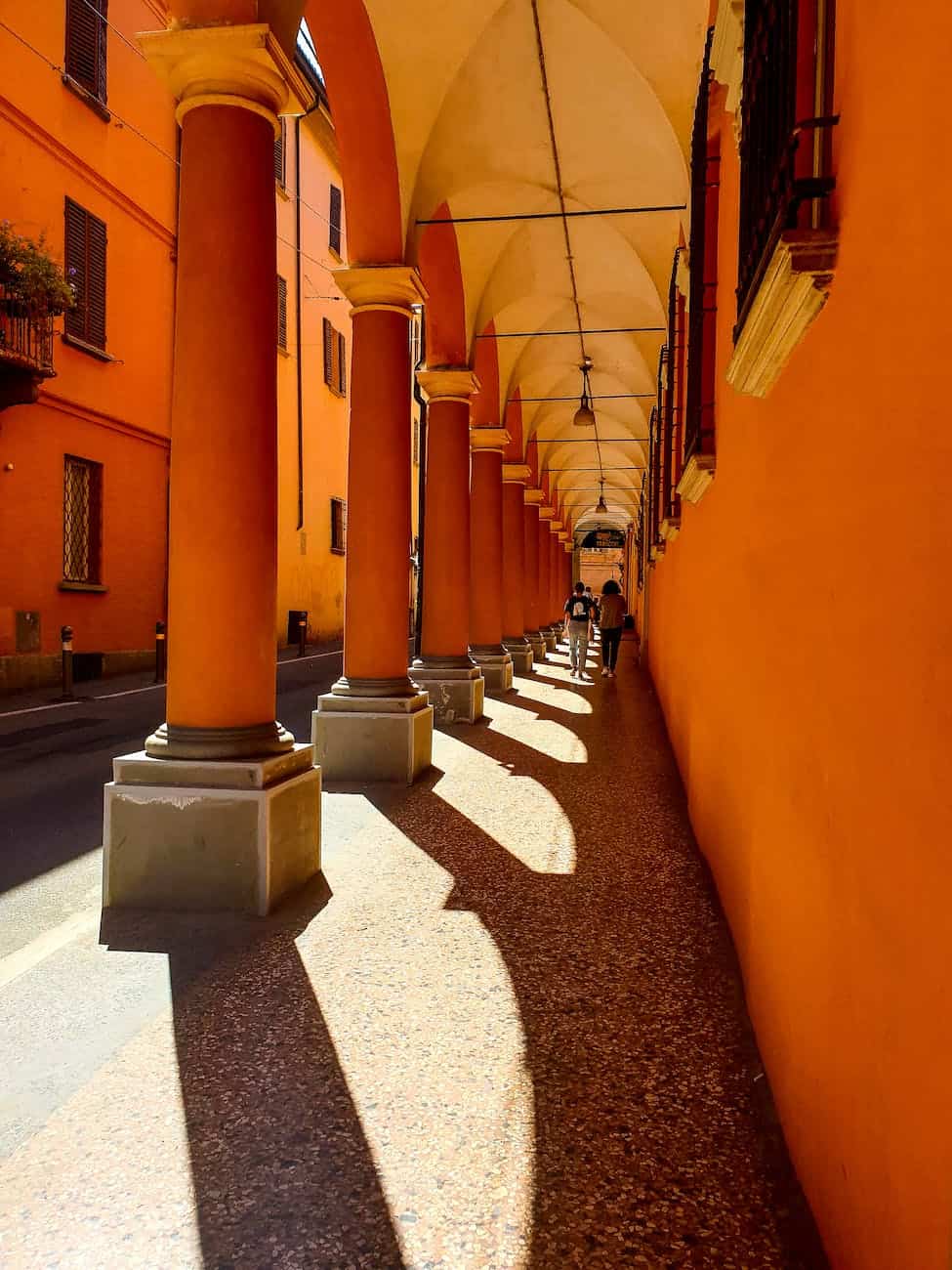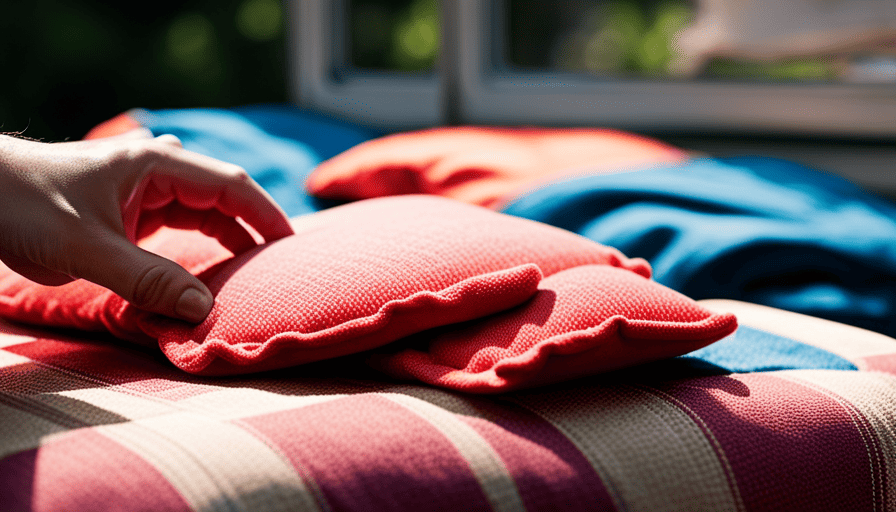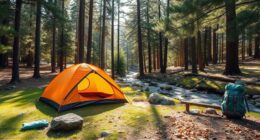In the vast open expanses where freedom and excitement beckon, the contemporary adventurer discovers tranquility in their modest abode: the camper. This small yet inviting living area allows us to explore uncharted territories while still enjoying the comforts of home.
But have you ever wondered how much power it takes to keep this mobile oasis running smoothly? Well, my fellow wanderers, let me shed some light on this electrifying topic. Like a conductor leading an orchestra, I will guide you through the intricate world of power requirements for campers.
From essential appliances and their power consumption to managing power usage and exploring backup options, we will unravel the mysteries of wattage and voltage. So, fasten your seatbelts and prepare to embark on a journey of technical precision and analytical prowess.
Let’s dive into the electrifying realm of camper power consumption.
Key Takeaways
- Air conditioners in campers can consume anywhere from 500 to 1500 watts of power, so choosing a more power-efficient air conditioner can reduce overall energy consumption.
- Alternative cooling methods like portable fans or evaporative coolers require fewer watts to operate, making them a more energy-efficient option.
- Energy-efficient appliances such as refrigerators, water heaters, and microwaves with lower wattage can minimize power consumption in campers.
- Integrating solar panels with appliances like refrigerators and water heaters can further reduce reliance on traditional power sources and optimize power consumption in campers.
Understanding Power Requirements
You’ll need to understand the power requirements of your camper in order to determine how many watts it takes to run it. Power generation for campers is essential, especially if you plan on using appliances and electronics while on the road.
One popular option for power generation is solar panels. Solar panels convert sunlight into electricity, which can then be used to power your camper.
The number of watts needed to run a camper will depend on the appliances and electronics you plan to use. It’s important to consider the power consumption of each individual device and calculate the total power requirement.
Some common appliances in campers include refrigerators, air conditioners, water heaters, and entertainment systems. Each of these appliances will have a specific power rating, measured in watts, which will determine how much power they consume.
By understanding the power requirements of your camper and the power consumption of your essential appliances, you can determine the total number of watts needed to run your camper efficiently.
Transitioning into the subsequent section about essential appliances and their power consumption, it is important to consider the specific power needs of each appliance in order to make informed decisions about power generation for your camper.
Essential Appliances and Their Power Consumption
When it comes to understanding power consumption in a camper, it’s crucial to consider the essential appliances that contribute to the overall load. The air conditioner, refrigerator, water heater, and microwave are key components that require careful analysis.
Each appliance has its specific power requirements, and knowing these details is essential for effectively managing the camper’s power supply.
Air Conditioner
Running an air conditioner in a camper demands a hefty amount of watts to keep you cool and comfortable on those scorching summer days. The power efficiency of an air conditioner is measured in watts, and it’s important to consider this when choosing the right unit for your camper. Here are some key points to consider:
- The power consumption of an air conditioner can range from 500 to 1500 watts, depending on the size and efficiency of the unit.
- Opting for a more power-efficient air conditioner can help reduce your overall energy consumption.
- It’s worth exploring alternative cooling methods, such as portable fans or evaporative coolers, which generally require fewer watts to operate.
- Insulating your camper and keeping windows covered can also help reduce the workload on your air conditioner.
- Investing in solar panels can help offset the power demand of running an air conditioner.
Now, let’s move on to the next section about the refrigerator.
Refrigerator
To keep your food fresh and your beverages chilled, a refrigerator is an essential appliance in your camper. When choosing a refrigerator for your camper, it is important to consider energy efficient options to minimize power consumption. Opting for a refrigerator with a high energy star rating can significantly reduce the amount of electricity required to run it. Additionally, utilizing solar power can further decrease energy consumption and allow for off-grid camping. Solar panels can be installed on the camper’s roof to harness the sun’s energy and power the refrigerator. This not only reduces your carbon footprint but also provides a sustainable and cost-effective solution. Incorporating energy efficient options and utilizing solar power can ensure that your refrigerator operates efficiently while on your camping adventures. Moving on to the next topic, let’s talk about the water heater.
Water Heater
Using a high-efficiency water heater in your camper ensures a steady supply of hot water for all your camping needs. It’s important to understand the efficiency of your water heater to optimize power consumption. Here are three key factors to consider:
-
Insulation: A well-insulated water heater minimizes heat loss and reduces the amount of energy required to maintain the desired water temperature.
-
Tankless technology: Tankless water heaters only heat water when needed, eliminating the need for constant heating and reducing energy waste.
-
Solar power options: Integrating solar panels with your water heater can harness the sun’s energy to power the heating process, reducing reliance on traditional power sources.
By implementing these efficiency measures, you can lower your camper’s energy consumption and decrease your environmental impact.
Transitioning into the subsequent section about the microwave, it’s essential to understand its power requirements.
Microwave
One of the essential appliances in a camper is the microwave, which allows for convenient and quick meal preparation while on the road. When it comes to choosing a microwave for your camper, it’s important to consider energy efficient alternatives that can minimize power consumption.
Compact microwaves with lower wattage are typically more energy efficient and consume less power compared to larger models. It’s recommended to opt for a microwave with wattage between 600-800 watts, as they provide sufficient power while still being energy efficient.
By choosing a microwave with lower power consumption, you can ensure that your camper’s electrical system isn’t overloaded and that you can use other appliances simultaneously.
With this in mind, let’s now transition into discussing power sources for campers.
Power Sources for Campers
Campers typically run on various power sources, such as power generators, solar panels, or batteries. Power generators are commonly used to provide electricity for campers when there is no access to electrical hookups. These generators are fueled by gasoline or propane and can produce enough power to run essential appliances, including microwaves, air conditioners, and refrigerators. However, they can be noisy and require regular maintenance.
On the other hand, solar panels are becoming increasingly popular as a power source for campers. They harness the energy from the sun and convert it into electricity, which can be stored in batteries for later use. Solar panels are silent, environmentally friendly, and require minimal maintenance. They can power lights, fans, and small appliances, but may not be sufficient for high-energy consuming devices like air conditioners.
Managing power usage in a camper is crucial to ensure a continuous supply of electricity. This involves monitoring the battery levels, adjusting the usage of appliances, and being mindful of power requirements. By efficiently managing power usage, campers can prolong the battery life and reduce the need for additional power sources.
Managing Power Usage
To effectively manage power usage while camping, it’s crucial to consider energy-efficient appliances. LED lights and low-power refrigerators are examples of such appliances that can significantly reduce power consumption.
Another important aspect is limiting the use of multiple high-wattage devices simultaneously. This helps prevent overloading the power source.
Lastly, utilizing power management systems can provide real-time monitoring and control of power usage. This optimizes efficiency and prevents unnecessary power wastage.
Energy-Efficient Appliances
Using energy-efficient appliances in your camper can significantly reduce the amount of watts needed to run it. When it comes to lighting, opt for energy-efficient LED bulbs instead of traditional incandescent ones. LED bulbs consume less energy and have a longer lifespan, making them ideal for camping trips.
Another way to reduce power consumption is by utilizing solar power. Installing solar panels on your camper can provide you with a renewable source of energy, reducing your reliance on traditional power sources. Additionally, consider investing in energy-efficient appliances such as refrigerators and air conditioners that are specifically designed for campers. These appliances are designed to consume less power while still providing the necessary functionality.
By incorporating energy-efficient lighting, solar power, and appliances, you can minimize the amount of watts required to run your camper and maximize your energy efficiency. Transitioning into the next section, it’s also important to limit simultaneous power consumption to further optimize energy usage.
Limiting Simultaneous Power Consumption
In order to optimize energy usage, think of simultaneous power consumption as a delicate balancing act, like juggling fragile glass balls. Power distribution plays a crucial role in managing the available wattage in a camper.
It is essential to understand the power requirements of each appliance and device to ensure that the total power consumed remains within the camper’s capacity. Monitoring power consumption is key to preventing overload situations and potential damage to the electrical system. By tracking the power usage of individual appliances and devices, one can make informed decisions about when and how to use them, effectively limiting simultaneous power consumption.
This approach allows for a more efficient use of available wattage and helps prevent tripping breakers or causing power outages. Transitioning into the subsequent section about using power management systems, it’s important to consider additional tools that can aid in optimizing energy usage.
Using Power Management Systems
Another tool that can assist you in optimizing energy usage is a power management system. These systems are designed to monitor and regulate the power consumption of various appliances and devices in your camper. By using power management systems, you can implement energy-saving techniques that can help you maximize the efficiency of your power usage.
Here are three key benefits of using power management systems in your camper:
-
Load shedding: Power management systems can automatically prioritize and shed non-essential loads when the power demand exceeds the available supply. This ensures that critical appliances, such as the refrigerator or air conditioner, continue to receive power while less important devices are temporarily turned off.
-
Energy monitoring: These systems provide real-time data on power consumption, allowing you to identify energy-hungry devices and make informed decisions about their usage. By understanding which appliances consume the most power, you can adjust your habits and reduce overall energy consumption.
-
Timed control: Power management systems often include programmable timers, allowing you to schedule when appliances turn on or off. This feature can help you optimize power usage by ensuring that devices are only active when needed.
Implementing power management systems in your camper can greatly improve energy efficiency and reduce power wastage. By utilizing these systems, you can effectively manage your power consumption and extend the battery life of your camper.
Battery Capacity and Power Needs
To ensure you have enough power to meet your needs, you’ll want to calculate the battery capacity required for your camper. Understanding battery life and calculating power requirements are essential steps in determining the right battery capacity for your camper.
Battery capacity refers to the amount of energy a battery can store, usually measured in amp-hours (Ah). To calculate the required battery capacity, you first need to determine the power needs of your camper. Consider all the electrical devices you plan to use, such as lights, appliances, and electronics.
Determine the power consumption of each device in watts and estimate the number of hours you’ll use them each day. Multiply the power consumption of each device by the number of hours of use to get the total watt-hours. Divide the total watt-hours by the voltage of your camper’s electrical system to convert it into amp-hours. This will give you an estimate of the battery capacity you need.
Once you have the battery capacity, you can move on to using inverters and converters to convert the battery’s DC power to AC power for your camper’s electrical devices.
Using Inverters and Converters
You’ll be amazed at how an inverter and converter can magically transform your camper’s battery power into AC power, bringing your electronics to life with a surge of energy. When it comes to powering your camper, you have two options: inverters and generators.
Inverters are great for small power requirements and are more efficient than generators. They convert DC power from your battery into AC power, allowing you to use your electronic devices without any hassle. On the other hand, generators produce AC power directly and are more suitable for larger power needs.
Now, let’s talk about solar power options. Solar panels are a popular choice among campers who want to harness renewable energy. They convert sunlight into electricity using photovoltaic cells, which can then be stored in batteries for later use. Solar power is clean, quiet, and doesn’t require fuel, making it an environmentally friendly option for camper power needs. Additionally, solar panels can be easily mounted on the roof of your camper, maximizing the exposure to sunlight.
Inverters and generators are both viable options for powering your camper, depending on your specific needs. However, if you’re looking for a sustainable and eco-friendly solution, consider incorporating solar power options into your camper’s electrical system.
Now, let’s move on to the next section, where we will discuss some power management tips to optimize your camper’s energy usage.
Power Management Tips
When it comes to power management in a camper, there are three key points to consider.
First, prioritizing power needs is crucial to ensure that essential systems and appliances are given priority over less important ones.
Second, using energy-saving settings on devices can significantly reduce power consumption and prolong battery life.
Lastly, monitoring power usage allows for a better understanding of how much power is being used and when adjustments need to be made to prevent overloading the system.
Prioritizing Power Needs
While camping, it’s important to prioritize power needs in order to ensure a comfortable experience.
Prioritizing power needs involves maximizing efficiency and making sure that essential devices receive sufficient power while minimizing energy waste.
To achieve this, it is crucial to identify the power requirements of each device and prioritize accordingly.
For example, refrigerators and heating systems are typically high-priority devices that require a significant amount of power.
By understanding the power consumption of each device, campers can allocate power resources effectively.
Additionally, utilizing energy-saving settings on devices can further optimize power usage.
These settings can reduce power consumption without sacrificing functionality.
By prioritizing power needs and using energy-saving settings, campers can make the most of their available power supply, ensuring a comfortable camping experience while minimizing energy waste.
Using Energy-Saving Settings
To optimize power usage and conserve energy, go into the settings on your devices and activate the energy-saving mode, just like putting your car on cruise control to save gas on a long road trip. Energy saving techniques are essential when running a camper, as every watt counts. By maximizing power efficiency, you can extend your battery life and reduce the need for frequent recharging. Energy-saving settings vary across devices, but some common options include adjusting screen brightness, enabling sleep mode when not in use, and minimizing background processes. These small changes can have a significant impact on your power consumption. To illustrate the potential energy savings, consider the following table:
| Device | Power Usage (Watts) |
|---|---|
| Laptop | 15 |
| Smartphone | 5 |
| LED Lights | 3 |
| Refrigerator | 50 |
By implementing energy-saving techniques, you can significantly reduce your power consumption and ensure a longer-lasting power supply. Transitioning to the next section about monitoring power usage, it is important to stay vigilant in tracking your energy consumption to make further adjustments.
Monitoring Power Usage
Keep track of how much power you’re using by monitoring your energy consumption regularly. Power usage tracking is essential in order to minimize power consumption in your camper. By monitoring your power usage, you can identify any appliances or devices that are using excessive amounts of electricity and adjust your usage accordingly. This will help you to conserve energy and extend the life of your battery.
There are various tools available that can help you track your power usage, such as energy monitors or smart power meters. These devices provide real-time data on your energy consumption, allowing you to make informed decisions about your power usage. By actively monitoring and managing your power consumption, you can ensure that you have enough power for your needs and avoid relying heavily on backup power options.
Backup Power Options
Consider the various backup power options available for your camper, as they can greatly enhance your camping experience.
When it comes to backup power for campers, two popular options are backup generators and solar panels. A backup generator is a reliable and convenient choice, as it can provide a significant amount of power to run your camper’s appliances and electronics. They’re usually powered by gasoline or propane and can produce a high wattage output.
On the other hand, solar panels offer a more sustainable and eco-friendly solution. They harness the power of the sun to generate electricity and can be installed on the roof of your camper. Solar panels are silent, require minimal maintenance, and can provide a consistent power supply during daylight hours. Additionally, they’re a great option for off-grid camping or for reducing your carbon footprint.
It’s important to consider your power needs and camping style when choosing between a backup generator and solar panels. Both options have their advantages and can be used in combination to ensure a reliable power source for your camper.
Moving forward, let’s explore some safety considerations to keep in mind when using backup power for your camper.
Safety Considerations
When it comes to safety considerations for camper power, there are three key points that need to be addressed: overloading prevention, proper ventilation, and fire safety.
These factors are crucial in ensuring the well-being of both the occupants and the camper itself. By implementing measures to prevent overloading, ensuring proper ventilation, and taking precautions against fire hazards, we can minimize the risks associated with camper power usage.
Overloading Prevention
To avoid a potential disaster, it’s crucial to ensure that the power usage in a camper does not exceed its capacity, preventing overloading. Overloading prevention and power management techniques are essential to maintain a safe and functional camper electrical system. Here are three key considerations to prevent overloading:
-
Distribute the load evenly: Spread out the power consumption across different circuits to prevent overloading on a single circuit.
-
Monitor power usage: Keep track of the electrical devices and appliances being used simultaneously to ensure that the total power consumption stays within the camper’s capacity.
-
Use energy-efficient equipment: Opt for energy-efficient appliances and devices that consume less power, reducing the risk of overloading.
By implementing these overloading prevention techniques and effectively managing power usage, you can ensure a safe and reliable electrical system in your camper.
Proper ventilation is another crucial aspect to consider when it comes to camper safety and will be discussed in the next section.
Proper Ventilation
Ensure that your camper has proper ventilation to maintain a healthy and comfortable living environment. A well-designed ventilation system is crucial for efficient air circulation inside the camper. It helps remove stale air, odors, and excess moisture, while providing a constant supply of fresh air. This not only improves the overall air quality but also prevents the buildup of harmful pollutants and allergens. To ensure proper ventilation, consider installing vents or fans in key areas such as the kitchen, bathroom, and sleeping areas. These vents should be strategically positioned to allow for optimal airflow throughout the camper. Additionally, regularly cleaning or replacing air filters will help maintain the efficiency of the ventilation system. Proper ventilation is essential for a safe and pleasant camping experience. Transitioning into the subsequent section about fire safety, it is important to take precautions to prevent any potential hazards.
Fire Safety
Proper ventilation is crucial when running a camper, but fire safety is equally important. To prevent fires and ensure emergency preparedness, there are several key measures to consider:
-
Install smoke detectors: These devices can quickly detect smoke and alert you to potential fire hazards.
-
Use fire extinguishers: Keep portable fire extinguishers in accessible locations to quickly suppress small fires.
-
Check electrical connections: Inspect your camper’s electrical system regularly for any loose or damaged wires that could spark a fire.
-
Practice safe cooking: Use cooking appliances that are specifically designed for campers and always keep a close eye on the stove.
By implementing these fire prevention measures and being prepared for emergencies, you can significantly reduce the risk of fire incidents in your camper.
Now, let’s delve into some final thoughts and recommendations for a smooth and safe camping experience.
Final Thoughts and Recommendations
In conclusion, my recommendation is to consider the total wattage needed to power a camper in order to make an informed decision. When it comes to running a camper, it’s crucial to have a clear understanding of the power requirements.
By calculating the total wattage needed, you can ensure that all your electrical appliances and systems can operate smoothly without any issues.
To begin with, it’s important to implement power-saving tips in order to minimize the wattage consumption. One effective way to achieve this is by using energy-efficient appliances and LED lighting. These appliances and lights consume less power, allowing you to save on electricity costs and ensure that your camper’s electrical system isn’t overloaded.
Additionally, it’s advisable to unplug any unnecessary devices when they’re not in use. This simple practice can significantly reduce the overall wattage usage and extend the lifespan of your camper’s electrical system.
Furthermore, considering the use of solar panels can be a great option for generating electricity and reducing dependence on traditional power sources.
By following these final recommendations and implementing power-saving tips, you can optimize the wattage usage in your camper. This will not only ensure the safety of your electrical system but also contribute to a more sustainable and eco-friendly camping experience.
Frequently Asked Questions
What are the common safety measures to take when using power sources for campers?
When it comes to using power sources for campers, power source maintenance and common electrical hazards are key considerations. Proper maintenance of the power source is crucial to ensure its safe and efficient operation. This includes regular inspections, cleaning, and testing.
Additionally, it is important to be aware of common electrical hazards such as overloading circuits, using damaged cords or outlets, and improper grounding. By understanding and addressing these safety measures, you can enjoy a safe and worry-free camping experience.
What are some power management tips for conserving energy while camping?
Power saving techniques are essential when camping. One effective method is to utilize alternative energy sources. For instance, during my last camping trip, I used a solar panel to charge my devices instead of relying on the camper’s batteries. This not only conserved power but also reduced my carbon footprint.
Additionally, I employed power management strategies such as turning off lights when not in use and using energy-efficient appliances. These measures ensured optimal energy conservation during my camping experience.
Are there any backup power options available for campers in case of emergencies?
There are several backup power options available for campers in case of emergencies. One option is a portable generator, which can provide a reliable emergency power supply.
Another option is a solar power system, which can harness the sun’s energy to generate electricity.
Additionally, some campers may choose to use a power bank or a power inverter to charge their devices or run small appliances during emergencies.
These backup power options ensure that campers have a reliable source of electricity when needed.
How can one calculate the battery capacity needed for their camper’s power needs?
To calculate the battery capacity needed for your camper’s power needs, you can follow a simple formula.
First, determine the total wattage of the appliances you plan to use. For example, if you have a refrigerator (100W), a fan (50W), and lights (20W), the total wattage would be 170W.
Next, estimate the number of hours you’ll use these appliances daily, say 6 hours. By multiplying the total wattage (170W) by the number of hours (6), you get the daily watt-hour (WH) consumption.
Finally, based on your camping duration, you can determine the required battery capacity. Additionally, installing solar panels can help recharge the battery and reduce reliance on other power sources.
Are there any specific safety considerations to keep in mind while using inverters and converters for campers?
When using inverters and converters for campers, it’s important to consider safety precautions. Inverter safety involves ensuring proper grounding, using the correct size wire and fuse, and avoiding overloading the system.
Regular maintenance of converters is also crucial to ensure their efficient operation. This includes checking for loose connections, cleaning the unit, and inspecting for any damage.
By following these safety considerations, you can prevent electrical hazards and ensure the smooth functioning of your camper’s power system.
What is the Average Wattage Used by a Camper?
The camper power consumption varies depending on several factors. The average wattage used by a camper typically ranges from 500 to 1500 watts. However, this can increase if the camper is equipped with air conditioning or other power-intensive appliances. Monitoring and managing camper power consumption are crucial to ensure a comfortable and efficient camping experience.
Conclusion
In conclusion, managing the power needs of a camper is like taming a wild beast. It requires careful calculation and strategic planning to ensure that every watt is harnessed effectively.
From understanding power requirements to choosing the right appliances and power sources, it’s a delicate dance of energy conservation. But fear not, fellow adventurers, for with the right knowledge and a few power management tips up your sleeve, you can conquer any power challenge that comes your way.
So go forth, embrace the wild, and let your camper’s power needs be tamed!

